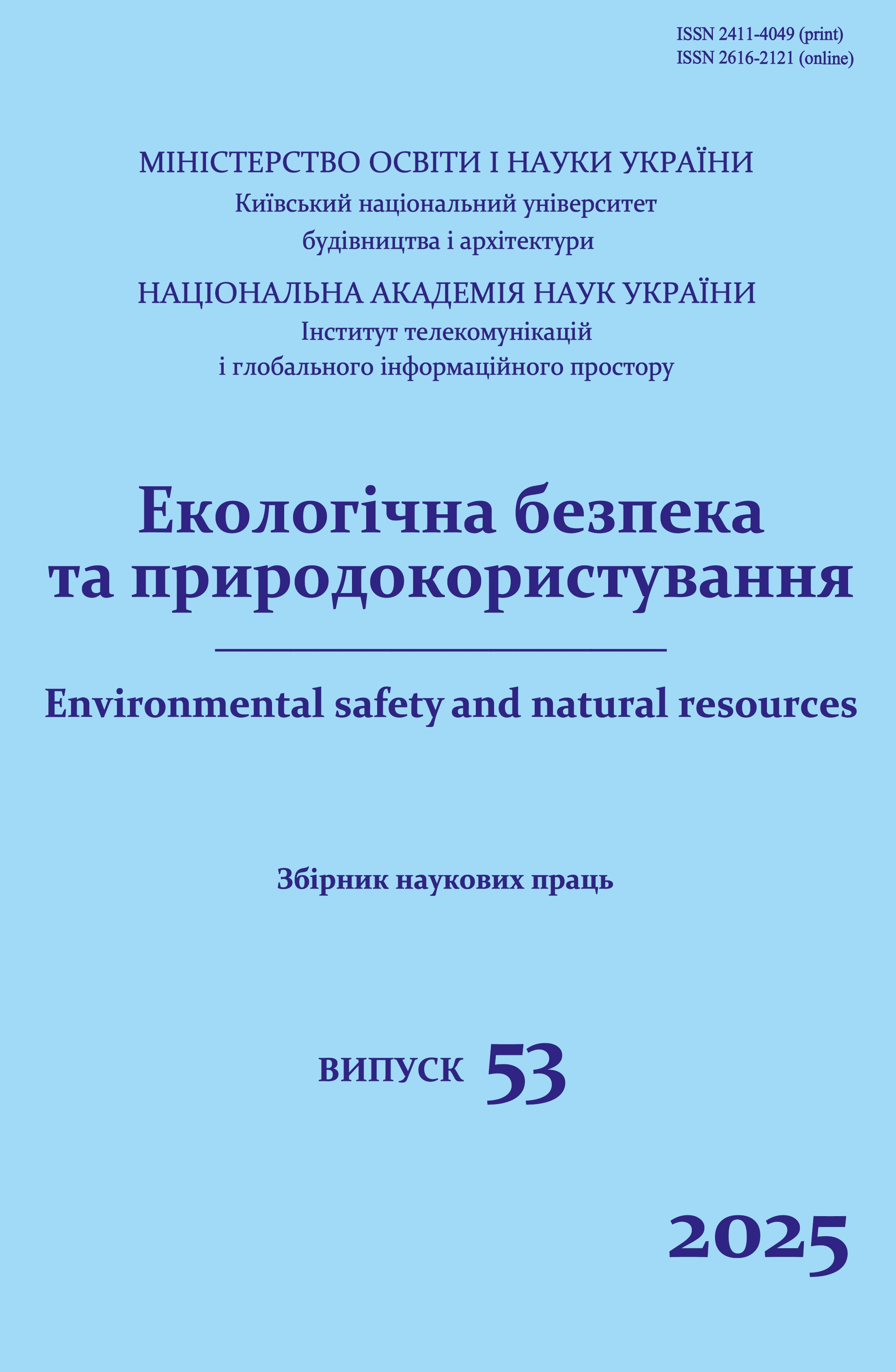Mathematical model of the distribution of radio monitoring resources for observation of satellite communication channels using neural networks
DOI:
https://doi.org/10.32347/2411-4049.2025.1.132-138Keywords:
information technology, mathematical model, time characteristics, neural networks, modeling accuracy, control system, control algorithms, satellite communication channelsAbstract
The work is devoted to solving a scientific and practical problem, which consists in developing a mathematical model for distributing radio monitoring equipment for observing satellite communication channels using neural networks. To increase the efficiency of resource allocation, it is proposed to use advanced artificial intelligence algorithms, in particular deep neural networks (DNN), reinforcement learning (RL) and graph neural networks (GNN). The use of such methods allows to significantly increase the adaptability of the system, increase the accuracy of analysis and ensure optimization of resource allocation. Mathematical models and innovative methods for controlling radio monitoring equipment that take into account variable parameters of satellite channels have been improved, adaptive resource allocation algorithms are used. To determine the time characteristics, most of which are for processing by a convolutional neural network, not only static node parameters, such as signal power or frequency, but also dynamic indicators that change in time are taken into account. To analyze and optimize resource allocation in satellite communication channels and radio monitoring facilities, we use a convolutional neural network (CNN) in combination with graph neural networks (GNN), the following structure of which can be effectively represented in the form of a graph. This allows obtaining spatial-temporal dependencies and increasing the accuracy of modeling.
It has been proven that to determine the time characteristics processed by a convolutional neural network (CNN), not only static node parameters, such as signal power or frequency, but also dynamic changes in these parameters over time are taken into account. This allows for adaptive analysis of changing operating conditions of satellite communication channels and radio monitoring facilities, which ensures the accuracy of modeling and forecasting of signals. The use of neural networks improves the analysis of satellite communication channels, increasing the level of informativeness and speed of data processing during radio monitoring.
References
Kipf, T.N., & Welling, M. (2017). Semi-Supervised Classification with Graph Convolutional Networks. International Conference on Learning Representations (ICLR).
Wang, X., Yu, H., & Gu, X. (2020). Graph Convolutional Neural Network-Based Signal Classification for Satellite Communication Systems. IEEE Access, 8, 177477-177486.
Zhang, X., Li, Z., & Jin, L. (2019). Deep Learning for Satellite Communications: Benefits and Challenges. IEEE Communications Magazine, 57(9), 70-75.
Velickovic, P., Cucurull, G., Casanova, A., Romero, A., Lio, P., & Bengio, Y. (2018). Graph Attention Networks. International Conference on Learning Representations (ICLR).
Goodfellow, I., Bengio, Y., & Courville, A. (2016). Deep Learning. MIT Press.
Chen, Z., Zhang, Z., & Liu, J. (2022). Time-Series Analysis of Satellite Data Using Convolutional Neural Networks. Neural Computing and Applications, 34(7), 5907-5917.
Boychuk, O.Ye., Slipchenko, V., & Hnatenko, I.A. (2021). Using artificial intelligence methods to analyze signals of satellite communication systems. Scientific Bulletin of NTUU "KPI", 3(15), 45–53 [in Ukrainian].
Trofymchuk, O.M., Adamenko, O.M., & Trysnyuk, V.M. (2021). Geoinformation technologies for environmental protection of the nature reserve fund. Ivano-Frankivsk: Suprun V.P. ISBN 978-617-7468-53-9 [in Ukrainian].
Petrenko, V.I., Tarasenko, L.M., & Rudenko, A.O. (2019). Models for analysis and classification of satellite communication channels under interference conditions. Scientific Notes of the NAS of Ukraine, 5(27), 72–80 [in Ukrainian].
Bayrachny, O.V., & Sydorenko, P.O. (2022). Application of neural networks for time series processing in radio monitoring systems. Control, navigation and communication systems, 3(67), 89–97 [in Ukrainian].
Downloads
Published
How to Cite
Issue
Section
License
Copyright (c) 2025 Vasyl Trysnyuk, Volodymyr Ehorov

This work is licensed under a Creative Commons Attribution 4.0 International License.
The journal «Environmental safety and natural resources» works under Creative Commons Attribution 4.0 International (CC BY 4.0).
The licensing policy is compatible with the overwhelming majority of open access and archiving policies.

